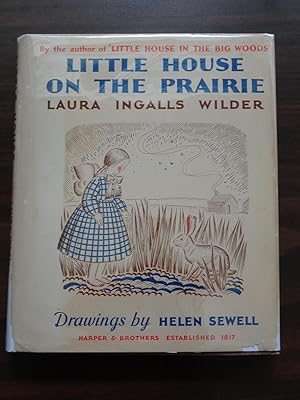On August 3, 2020, Debbie received an email from a teacher looking for historical fiction. She wrote that teachers in her school use Island of the Blue Dolphins and she doesn't want to use it (or others like it) because she's learning about flaws in popular and classic and award-winning books. What, she wonders, would we recommend?
She's been looking at AICL and wonders if we have a list of historical fiction by Native writers (affiliations listed for each writer are from bios in their book or on their professional website; if we've listed yours incorrectly, please let us know and we will change it).
This post today is meant to work towards providing teachers with a list of historical fiction that we recommend. We'll add to it over time. We are organizing it in a way that we hope is helpful: chronologically. As you'll see when you read on, we're listing books by decade but also have a final category for books that are volumes that span a wide range of years.
But what would our end-year be?!
We enjoyed talking about it because the definitions vary. A book set in the 1970s doesn't feel like historical fiction to Debbie (those were her teen years). But how does that book feel to a teen reader, today?
Read Write Think (a project from the National Council of Teachers of English, and the International Reading Association) defines historical fiction as 30 years in the past. In the third edition of
Children's Literature in Action: A Librarian's Guide, Sylvia M. Vardell writes that historical fiction "is set at least one generation in the past." But, she also says, "that bar is movable as time keeps moving on" (page 191). With that in mind, we're including books set in the 1970s and we welcome your thoughts! And book suggestions, too.
1830s
How I Became A Ghost: A Choctaw Trail of Tears Story by Tim Tingle (Oklahoma Choctaw). Published in 2013 by Roadrunner Press.
Mary and the Trail of Tears: A Cherokee Removal Survival Story by Andrea L. Rogers (Citizen of the Cherokee Nation). Published in 2020 by Capstone Press.
1840s
The Birchbark House (and subsequent books in the series) by Louise Erdrich (Turtle Mountain Ojibwe). Published in 1999 by Hyperion Books for Children.
1860s
Danny Blackgoat, Navajo Prisoner by Tim Tingle (Choctaw). Published in 2013 by 7th Generation.
1920s
I Am Not a Number by Jenny Kay Dupuis (Anishinaabe, Nipissing First Nation) and Kathy Kacer. Published in 2016 by Second Story Press.
1940s
At the Mountain's Base by Traci Sorell (enrolled citizen of the Cherokee Nation). Illustrations by Weshoyot Alvitre
(Tongva, Cahuilla, Chumash, Spanish & Scottish). Published in 2019 by Kokila Press.
1950s
Indian No More by Charlene Willing McManis (Umpqua, enrolled in Confederated Tribes of Grand Ronde) with Traci Sorell (enrolled citizen of the Cherokee Nation). Published in 2019 by Lee & Low Books/Tu Books.
My Name Is Seepeetza by Shirley Sterling (Salish). Published in 1997 by Douglas McIntyre.
1960s
House of Purple Cedar by Tim Tingle (Choctaw). Published in 2014 by Cinco Puntos Press.
1970s
If I Ever Get Out of Here by Eric Gansworth, Sˑha-weñ na-saeˀ, (enrolled member of the Onondaga Nation, Eel Clan). Published in 2013 by Arthur A. Levine.
Books that Span a Wide Range of Years
Saltypie by Tim Tingle (Choctaw). Published in 2010 by Cinco Puntos Press.
Tales of the Mighty Code Talkers by Weshoyot Alvitre (Tongva, Cahuilla, Chumash, Spanish & Scottish), Kristina Bad Hand (Sicangu Lakota & Cherokee), Roy Boney (Cherokee), Johnnie Diacon (enrolled member Mvskoke Nation), Lee Francis IV (Laguna Pueblo), Geary Hobson (Cherokee-Quapaw/Chickasaw), Jonathan Nelson (Diné), Renee Nejo (Mesa Grand Band of Mission Indians), Michael Sheyahshe (Caddo), Arigon Starr (Kickapoo), Theo Tso (Las Vegas Paiute). Published in 2016 by Native Realities.
This Place: 150 Years Retold by Kateri Akiwenzi-Damm (Chippewas of Nawash First Nation at Neyaashiinigmiing), Sonny Assu (not specified), Tara Audibert (Maliseet), Kyle Charles (member of Whitefish Lake First Nation), GMB Chomichuk (not specified), Natasha Donovan (member of the Métis Nation of British Columbia), Scott A. Ford (not specified), Alicia Elliott (Tuscarora, Six Nations of the Grand River), Scott B. Henderson (not specified), Ryan Howe (not specified), Andrew Lodwick (not specified), Brandon Mitchell (Mi'kmaq), Rachel Qitsualik-Tinsley (Inuit-Cree), Sean Qitualik-Tinsley (not specified), David A. Robertson (member of Norway House Cree Nation), Niigaawewidam James Sinclair (Anishinaabe, St. Peter's/Little Peguis), Jen Storm (Ojibway, Couchiching First Nation), Richard Van Camp (member of Tlicho Nation), Katherena Vermette (Métis), Chelsea Vowel (Métis), Donovan Yaciuk (not specified). Published in 2019 by Highwater Press.
































